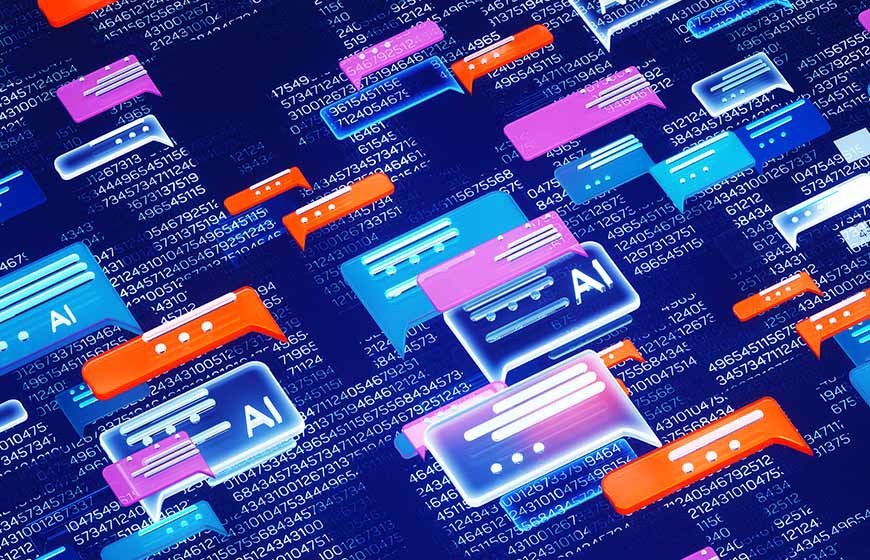December 30, 2024
3 Key Takeaways for Businesses Using Edge Computing
As artificial intelligence continues to grow and impact business on a larger scale, organizations are turning to edge computing to help manage data and glean insights for better business results. Here are a few edge computing takeaways to consider.

Artificial intelligence (AI) is fundamentally transforming how we think and solve problems. This paradigm shift compels us to approach challenges with an entirely new skillset, adapting our mindset and workflows to align with AI-enabled tools and capabilities.
As AI grows and becomes more integral to business strategy, the need for leaders to unify their information technology and operational technology departments also becomes more imperative. Traditionally, IT and OT teams operate in isolation, leveraging separate technology stacks, protocols and governance models.
By integrating data from OT into your IT environment, you can analyze operational insight with your modern data platforms and tools such as AI models.
We are seeing more organizations incorporate edge computing, a viable architecture that supports distributed computing to deploy compute and storage resources closer to — ideally in the same physical location as — the data source.
By shifting data away from a traditional data center and pushing it to the source of the data, you can glean insights from real-time analytics, reduce latency and improve scalability.
3 Takeaways on Edge Computing Driving Better Business
1. Security
If you are seeking to transform your organization through the powers of edge computing, it’s essential that you start by thinking about security.
Put simply, security is essential to manage devices and data from the edge to the core data center to the cloud.
In the manufacturing sector alone, it’s been reported that more than half the organizations surveyed have an inaccurate or no-asset inventory, according to IDC. In other words, many don’t know what assets they have, how they’re connected or to whom they’re connected.
By building an active inventory that will be reviewed on a regular basis, you can greatly decrease the security risk that your own assets might pose.
2. Video Intelligence
The emergence of AI has led to video intelligence becoming one of the fastest growing Artificial Intelligence of Things solutions on the market. This emerging tech solution can provide major benefits to organizations across multiple sectors.
Modern video intelligent cameras use edge AI to analyze images or livestreams, offering real-time insights. This advanced technology eliminates the need for extensive human review, which previously took hours to gather actionable insights. These cameras can detect anomalies, recognize faces, track objects and even predict potential security threats through complex algorithms and machine learning models embedded within the devices.
By leveraging edge computing, these systems are capable of processing data locally, reducing latency, enhancing privacy and ensuring that critical decisions are made promptly. The integration of sophisticated AI mechanisms into video surveillance marks a significant leap forward in efficiency and effectiveness, transforming how industries manage monitoring and security operations.
AI-powered video intelligence at the edge is not only changing the way data is analyzed efficiently, but also how organizations structure their daily operations — for example, being used to assess lines at stadiums to help reduce customer wait-times.
3. The New Team: Agile, Adaptive and AI-Enabled
The future of problem-solving lies in creating agile and adaptive teams that embrace AI as an extension of their capabilities. These teams understand that AI isn't just a tool — it’s a partner in innovation. By embedding AI literacy and cross-functional skills into your teams’ DNA, they can approach challenges from fresh angles, unlocking opportunities previously unnoticed.
To effectively harness AI, organizations and teams must break free from traditional ways of thinking. It's not enough to stay confined to familiar environments or workflows. Teams must develop a cross-disciplinary mindset, leveraging insights from diverse fields to innovate and adapt.
AI is not here to replace human ingenuity; it’s here to augment it. But without the foundational understanding of how to work with AI, even the most advanced tools will remain underutilized. Organizations must prioritize upskilling their workforce, fostering environments where experimentation and learning thrive.
Need to Work Smarter Using AI? CDW Can Help You Optimize.
Your organization might be able to do a lot of cool things with AI adoption, but in my experience, ROI is an area that most businesses struggle with. At CDW, our knowledgeable emerging tech strategists can help assess your business and co-create solutions tailored to your goals that lead to the best return on investment. Coupled with our trusted partnerships with industry leaders, we can help you solve business challenges on any timeline.
We offer workshops to help you get started on not only AI adoption, but also your emerging tech transformation. Check out our Digital Transformation page to learn more about our transformative workshops and video intelligence solutions.
Jill Klein
Head of Emerging Technology and IoT
